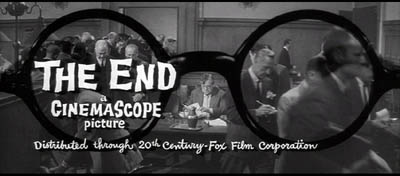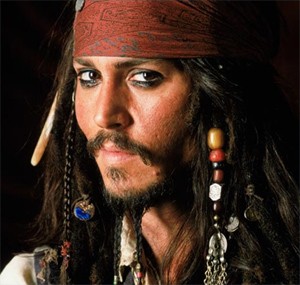
There’s certainly a purpose to all this madness—though to discuss how the film achieves this would be giving the game away. Rest assured dear reader, there are no spoilers in this review.
This week’s Bi-Polar Review: Shutter Island

Martin Scorsese is from the New Hollywood school of thought. A title given to aspiring directors in the sixties and seventies; the generation of “movie brats” who had grown up with the cinema, studied the visual image and begun breaking down the studio contrivances in a (then) predominantly conservative industry. A self confessed film nerd, able to pluck inspiration from films ranging from Italian neo-realism to (in Shutter Islands case) concrete Hitchcock thrillers. Scorsese’s films have always played homage to films of past, but have also been coupled with his trademark stamp of death and onanism.

Scorsese’s latest effort Shutter Island is no different, offering a structured gothic noir exhumed from a more than capable novelist. Mr. Lehane’s work is merely a framework with which Scorsese could etch, sculpt and mould from a lifetime as a movie admirer and decades as an esteemed director and auteur.
No surprises who takes the lead this time round. Leonardo DiCaprio, collaborates with Scorsese for the third successive time. Bringing with him that understated Bostonian drawl in the shape of U.S. marshal Teddy Daniels, summoned to the Island after a patient mysteriously disappears in Jonathon Creek fashion. As DiCaprio and his partner (a suitably restrained Mark Ruffalo) make inquiries of the patients and staff, they’re flummoxed by the seemingly implausible escape of a woman evaporating from a secure cell with around the clock surveillance, and second by how a patient could leave an island that makes Alcatraz look like the Isle of Wight. All theories point to Sir Ben of Kingsley, both Jekyll and Hyde of the hospital, a shrink who treats the prisoners as patients rather than criminals, but seems to be hiding something from poor Teddy. For his part, DiCaprio brings his own share of personal baggage: Still plagued by harrowing visions of Dachau, and his wife’s death in an apartment fire.

What starts off as crime procedural slowly transforms into psychological thriller, as more torrid conclusions arrive, the pressure and claustrophobic atmosphere gradually start to eat away at Daniels’ nerves. Scorsese relishes in his protagonists nightmarish dream sequences and flashbacks that engulf his situation while heavily clouding his judgment. Shutter Island may initially seem like a nervy genre piece à la Cape Fear, but I would contend it lends itself more to a Hitchcockian tale, a carnival show where it’s sometimes difficult to distinguish between the troubled and troublesome. Imagine walking into your neighbour’s house after there has been a less than cosy confrontation. You are unsure as to why the atmosphere in the room is so bloody tense, but if you had any sense – you wouldn’t bother asking.
.jpg)
Teddy’s problems are never too much for Scorsese and DiCaprio to handle, who in their third collaboration in a row have developed a definite rhythm that is evident in every scene. It is almost effortless how Teddy’s anxieties begin to creep into our own, the director makes the most of this, by choosing claustrophobic close ups, moving the camera in a little too close for comfort so we can see and more poignantly feel the characters every last nuance. All in all, it won’t be a beloved film to most, inspiring more dissertations and smug berets than popcorn fanatics and box office receipts. While this may not bring many happy faces around conference tables in Hollywood, they should take comfort in the fact that Shutter Island has not only a clear sense of self and purpose, but demonstrates a director (and production team for that matter) on the top of their game. Put simply, this is Scorsese at its best and noir at its darkest.

Part Two
If Shutter Island were a blog it would be a page dedicated to 9/11 ‘truthers’, awash with theories on Bush speeches and Dan Brown numerology, tales of secret establishments and handshakes. The kind of site that hosts stock gifs and secondary colour schemes – all-caps and Bill Hicks prophecies. Don’t trust The Man yeah?

As soon as US marshal Teddy Daniels steps onto the docks of Shutter Island. We’re thrown into a world of storms, loonies, liquids, Sir Ben Kingsley and surprisingly lucid dreams. Oh yeah, there’s a musical score that would make the Queen Mary blush. Conspiracies arise in droves as a Nazi, a murderer, and some diabolical experiments are thrown into the mix – add a touch of British weather for good measure and you have yourselves one confused looking Teddy.

Teddy’s running out of time, and for a while we don’t know exactly why. Once we do, Scorsese sets about wrapping things up a bit too fast, like a lecturer who spends two hours talking about student indulgence and apathy before realising he has ten minutes left to actually get to the point. This tendency to overindulge in Teddy’s mind state leaves us lingering in the mind of a clearly confused protagonist cocooned in his own anxieties and as such – confused and cocooned ourselves.

At this point you are not quite sure whether it is you or Scorsese who are beginning to lose their marbles. Has DiCaprio stepped into a nightmarish noir thriller or a Scooby Doo episode? He’s not sure, we’re not sure, but Scorsese, the ever present conductor, quickly prepares for the next act – audience, I present to you – some rats!

Running in at just under two and a half hours, there is a lot of food for thought for what is essentially a revitalised gothic B-movie. The narrative and pacing is completely at odds with the director’s presentation; disproportionate handling of both the technique and homage’s to the works of Hitchcock and Kubrick. When the secrets of Shutter Island are finally presented to the audience in such quick succession – you are with little time to digest. Imagine Paula Radcliffe running the first three legs of a 4×100 relay, she plods along in earnest bounds, gracious and dignified, while others piss past her (sorry, couldn’t resist). She isn’t going to be drawn into the sprint; she’s in it for the long haul after all. It’s taken two hours to get three hundred metres but she enjoyed the journey and for the most part, it was nice seeing her get through it. But wait, who is this on the horizon?

‘Take ya Tena Lady Radders, Usain got this!’
Dré























































Bi-Polar Reviews: Public Enemies II
July 23, 2009Sequels rarely live up to expectation, with this in mind we present part two.
Did you miss the first half? i suggest you click.
If you are like me, a fan of Michael Mann, while watching Public Enemies you will get the sense that you have seen an awful lot of this before. One man, one goal, one way etc etc. The subject of Mann’s new film is the pursuit of one John Dillinger and his subsequent pursuit of stardom. As Dillinger’s reputation increases, Mr Hoover’s impatience escalates. Cue Melvin Purviss, humourless, calculated and utterly determined to catch his man.
The players behind this film attract such great expectations. It’s Bale. It’s Depp. It’s Mann. It is these high expectations of the picture, that ultimately result in it’s undoing.
The film that has been marketed as a biopic, should be presented to the audience as such. Where Public Enemies fails is in its presentation of Dillinger. We are supposed to empathise with the main protagonist. Yet the ambivalent, cool demeanour of Dillinger presented on screen, distances the character from the viewer on an emotional level. If you didn’t know about John Dillinger before entering the cinema, you certainly won’t know a whole lot more walking out. The film feels like a footnote to an intricate story, settling on the cat and mouse game between Dillinger and Purviss.
This cat and mouse game is however, projected to us in beautiful high definition. We get the crispest hi-res images, coupled with the frightened Parkinson’s camerawork so prevalent in action sequences post-Private Ryan. The in-your-face digital photography, which worked brilliantly with the post-modern Collateral, seems slightly anachronistic in an era of fedora’s and trilby‘s.
Mann dedicates himself to making Dillinger looking more dapper than ever, and that’s the problem. It looks the business, but has no depth, nothing to say, no new shtick. It just feels like a homage to the better films that shaped the genre. The digital Bonnie and Clyde, with digital technology that clearly isn’t there yet.
The violent aesthetic of Bonnie and Clyde embellished the message it wished to convey, to an ever growing younger audience in search of anti-establishment moralities on the big screen. The movie was a powerful entity, sparking the arrival of New Hollywood cinema. With Public Enemies, you get the feeling that although it is violent in parts, it is more interested in what the violence does to people physically rather than mentally. The realistic nature of what happens when a gun shot makes impact in glorious high definition. Here violence serves as spectacle rather than narrative development.
At the centre of this narrative is the binary opposite approach of which Mann is all too familiar. Mann proposes that Purviss and Dillinger, are two sides of the same character, albeit at opposing ends of the law. In previous Mann offerings, this juxtaposition revelled in the dualism of its characters. Remember that coffee shop climax between De Niro and Pacino in Heat?
In the case of Public Enemies, we are meant to believe that somehow Dillinger and Purviss are one and the same. Yet despite all the intimate cinematography, do we ever feel that we truly know them? The problem lies in Mann’s back catalogue. The underlying struggle of good and evil that run throughout the filmmakers previous works. While previous efforts effortlessly confront this theme, Public Enemies highlights the similarities between the two protagonists – yet rarely demonstrates them.
It’s not Heat, it’s not trying to be Heat…but maybe it should’ve.
Dré
Tags:bale, batman, bonnie and clyde, de niro, depp, film review, heat, hoover, john dillinger, keith richards, miami vice, michael mann, pacino, paniro, pirate, public enemies, purvis, social commentary
Posted in Bi-Polar Reviews, Own Work | Leave a Comment »